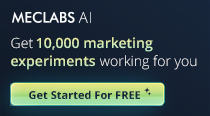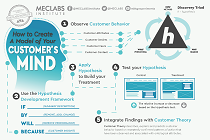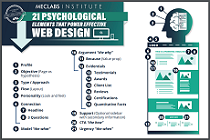
Dan Briscoe, Vice President of Marketing, HCSS
For complex B2B products and services, customers often overlook the intricacies and value of the entire process. For example, very few potential customers are familiar with the companies involved in a construction project — or the role that HCSS software plays in its success.
With more than 4,000 construction companies and 45,000 end-users on HCSS software, the company was looking for a way to leverage those clients' stories and turn them into usable content.
Marketing didn’t know exactly how HCSS software was helping customers and had no way to easily obtain consent for sharing consumer information. In order to engage current customers and generate excitement around its product, Dan Briscoe, Vice President of Marketing, HCSS, and his team created an interactive contest where customers entered their successful projects, from buildings to bridges to race tracks, in a "March Madness" competition.
In this session, Briscoe will detail how the contest resulted in an 880% increase in Web traffic over its two-month duration. It also created 96,000 new users for the brand and increased social media traffic by 432%.
The results, he said, have been fantastic, but “I don’t think it really shows the impact of what this contest did for our company. Before this contest, our marketing team was really viewed just as a print shop … this really put us on the map in the company and showed them what we could do.”
Related Resources
See Dan Briscoe onstage at this year’s Summit, where he will detail HCSS’ MarketingSherpa Awards 2017 Best-in-Show campaign.
Make Your Customer the Hero: How HCSS saw a 54% increase in annualized revenue without mentioning the product – The full, award-winning case study of HCSS’ Summit 2017 presentation
Inbound Marketing: Construction software company doubles submission goals in bracket contest for customer projects – The full case study of HCSS’ 2016 Summit presentation
Get Better Business Results With a Skillfully Applied Customer-first Marketing Strategy

The customer-first approach of MarketingSherpa’s agency services can help you build the most effective strategy to serve customers and improve results, and then implement it across every customer touchpoint.
Get More Info >MECLABS AI

Get headlines, value prop, competitive analysis, and more.
Use the AI for FREE (for now) >Marketer Vs Machine

Marketer Vs Machine: We need to train the marketer to train the machine.
Watch Now >Live, Interactive Event

Join Flint McGlaughlin for Design Your Offer on May 22nd at 1 pm ET. You’ll learn proven strategies that drive real business results.
Get Your Scholarship >Free Marketing Course

Become a Marketer-Philosopher: Create and optimize high-converting webpages (with this free online marketing course)
See Course >Project and Ideas Pitch Template

A free template to help you win approval for your proposed projects and campaigns
Get the Template >Six Quick CTA checklists

These CTA checklists are specifically designed for your team — something practical to hold up against your CTAs to help the time-pressed marketer quickly consider the customer psychology of your “asks” and how you can improve them.
Get the Checklists >Infographic: How to Create a Model of Your Customer’s Mind

You need a repeatable methodology focused on building your organization’s customer wisdom throughout your campaigns and websites. This infographic can get you started.
Get the Infographic >Infographic: 21 Psychological Elements that Power Effective Web Design

To build an effective page from scratch, you need to begin with the psychology of your customer. This infographic can get you started.
Get the Infographic >Receive the latest case studies and data on email, lead gen, and social media along with MarketingSherpa updates and promotions.